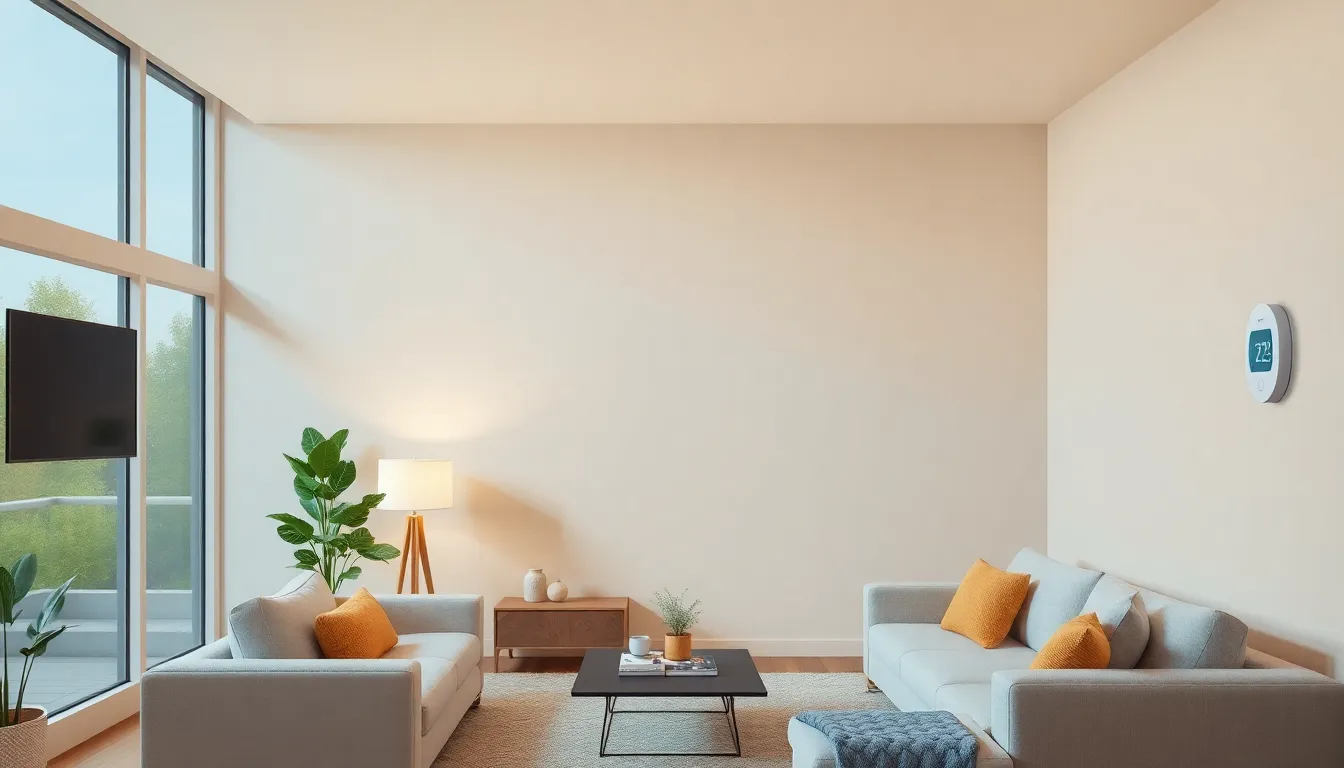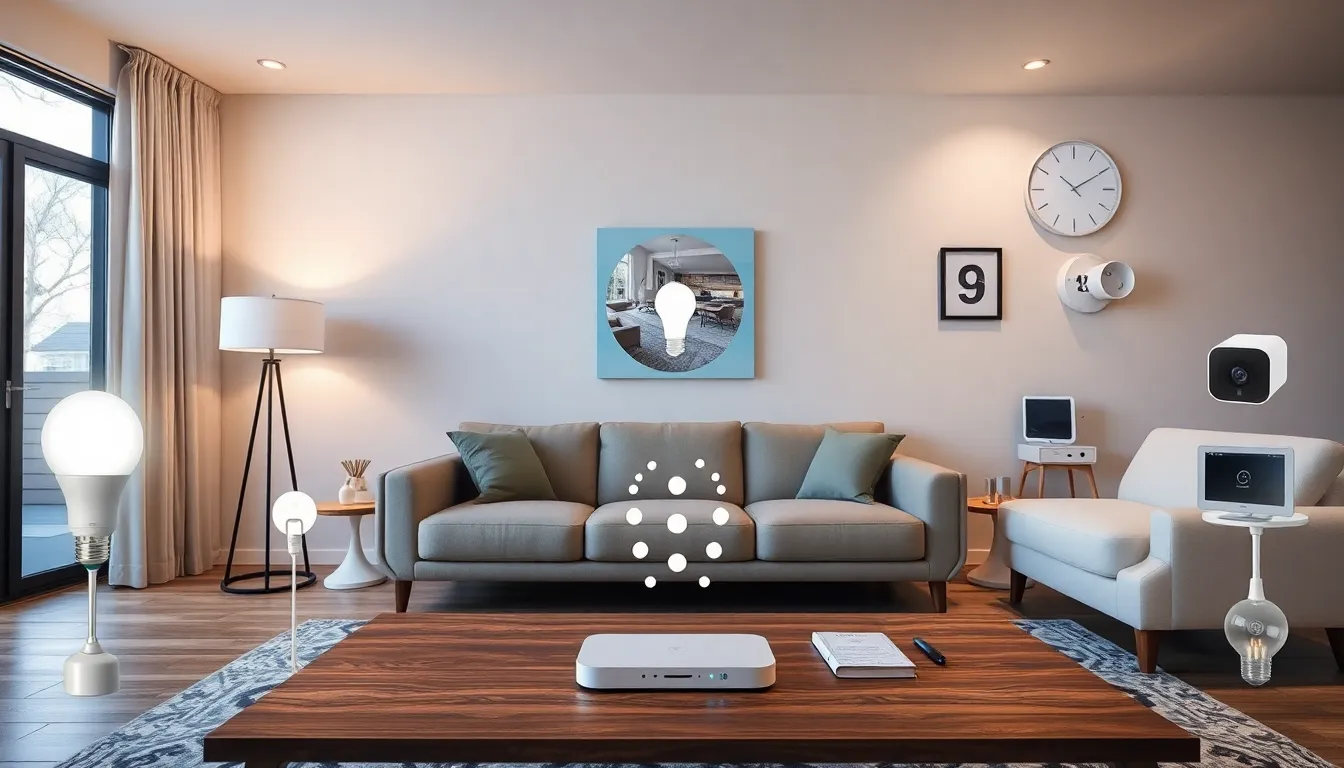In a world where smart homes are becoming the norm, the Zigbee smart home hub stands out like a superhero in a sea of sidekicks. Imagine controlling your lights, thermostat, and even your coffee maker with just a few taps on your phone—no more wandering around the house like a lost puppy looking for the light switch. With Zigbee, it’s not just about convenience; it’s about living in the future, one smart device at a time.
But what makes Zigbee the go-to choice for tech-savvy homeowners? It’s all about seamless connectivity and energy efficiency, making your home not just smarter but also greener. As devices communicate effortlessly, you’ll wonder how you ever survived without it. Dive into the world of Zigbee and discover how this little hub can transform your home into a smart sanctuary, all while keeping your sanity intact.
Table of Contents
ToggleWhat Is a Zigbee Smart Home Hub?
A Zigbee smart home hub serves as the central control point for a home’s smart devices. This device connects various appliances, such as lights, locks, and sensors, enabling seamless communication between them. Zigbee technology utilizes a low-power wireless mesh network, providing effective coverage and allowing devices to relay information efficiently.
Many homeowners appreciate the easy setup offered by a Zigbee smart home hub. Users can quickly pair devices through a mobile app, making it simple to manage multiple products from different manufacturers. Compatibility with a range of devices enhances its appeal, as Zigbee supports various brands and types of smart products.
Security features are crucial for any smart home system. Zigbee provides encrypted communication, keeping data safe from unauthorized access. Reliable operation even in larger homes is another advantage, as Zigbee signals can hop between devices, effectively extending range and reliability.
Energy efficiency stands out among its benefits. Zigbee devices typically consume less power than their Wi-Fi counterparts, contributing to lower energy bills and a reduced carbon footprint. This smart technology allows users to monitor and optimize energy use through connected apps.
Overall, a Zigbee smart home hub creates a cohesive smart home environment. By integrating various devices, it fosters a streamlined and user-friendly experience, enhancing daily convenience and comfort.
Benefits of Using a Zigbee Smart Home Hub


Zigbee smart home hubs offer several advantages for enhancing home automation. Users experience increased control and coordination of smart devices, leading to smoother operations.
Enhanced Connectivity
Enhanced connectivity stands out as one of the primary benefits of a Zigbee smart home hub. Multiple devices connect to the hub through a low-power wireless mesh network. This design allows for seamless communication between lights, security systems, and other smart appliances. A Zigbee hub supports a wide variety of devices from different manufacturers, simplifying setup and integration. Users gain the ability to control and manage devices efficiently, even in larger homes. This robust connectivity ensures that devices maintain a reliable connection, minimizing disruptions during use.
Energy Efficiency
Energy efficiency significantly improves when utilizing a Zigbee smart home hub. The technology enables devices to communicate and collaborate in real-time, optimizing energy consumption. By automating actions based on usage patterns, Zigbee helps reduce unnecessary energy waste. Connected smart thermostats adjust heating and cooling based on occupancy, resulting in lower utility bills. Analyzing energy usage data promotes smarter decisions about device usage, contributing to a reduced carbon footprint. Overall, a Zigbee hub fosters a more energy-conscious home environment, aligning with both convenience and sustainability goals.
How to Choose the Right Zigbee Smart Home Hub
Selecting the ideal Zigbee smart home hub involves evaluating specific features and ensuring compatibility with various devices.
Features to Consider
Evaluate security aspects, as a good hub offers encrypted communication to safeguard data. Assess range capabilities; a strong hub maintains connections across larger spaces. Investigate potential for automation; compatible hubs allow for scheduling and remote control of devices. Check the user interface; an intuitive app enhances management processes. Finally, consider energy monitoring features, which can aid in tracking consumption and improving efficiency.
Compatibility with Devices
Ensure compatibility with a wide array of devices, including lights, locks, and sensors from various brands. Zigbee’s versatility often allows for integration with products from leading manufacturers. Research product specifications to confirm seamless communication across devices in your home. Prioritize compatibility with existing devices, which ensures a smoother transition when upgrading to a new hub. Investigate ecosystems; some hubs collaborate with voice assistants like Alexa and Google Assistant, enhancing user experience.
Setting Up Your Zigbee Smart Home Hub
Setting up a Zigbee smart home hub involves several straightforward steps. First, choose an optimal location for the hub that allows for maximum connectivity with devices throughout the home. A central position typically provides the best coverage.
Next, connect the hub to a power outlet and link it to the home network using an Ethernet cable or Wi-Fi, depending on the model’s specifications. Following this, program the hub through its dedicated app, available on smartphones or tablets.
Adding Zigbee devices to the hub occurs seamlessly. Initiate pairing mode on the hub and activate the discovery function in the app to locate devices. Lights, locks, and sensors should connect automatically.
Organize devices into groups or rooms in the app for easier management. This segmentation enhances user experience by creating custom automation and scenes. For instance, a “Good Morning” scene could turn on the lights and adjust the thermostat.
Testing the setup is crucial. Each device should operate as expected within the app, responding to commands promptly. If any device has issues, consult the troubleshooting guide provided by the manufacturer.
Monitoring device status can proceed via the hub app. Users can receive alerts for activities like security breaches or low battery levels, ensuring a continuously smart home.
Enjoying a Zigbee smart home hub represents a leap toward a more efficient and user-friendly living space. Adopting this technology fosters a connected environment that simplifies daily routines and enhances comfort.






